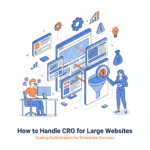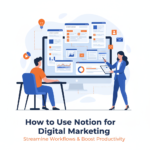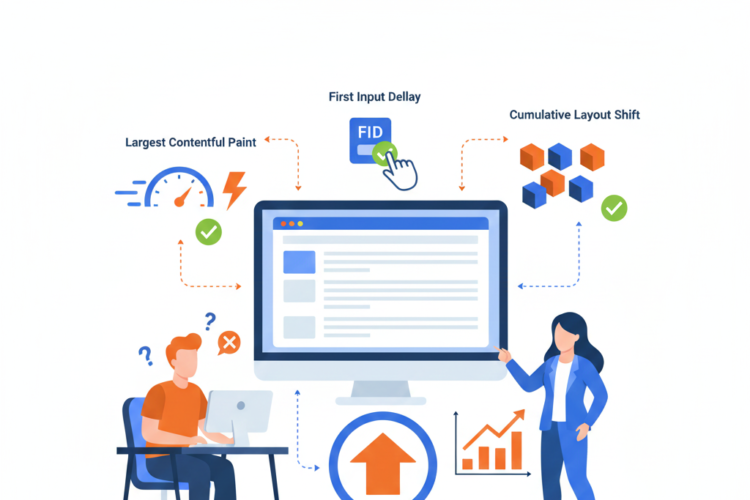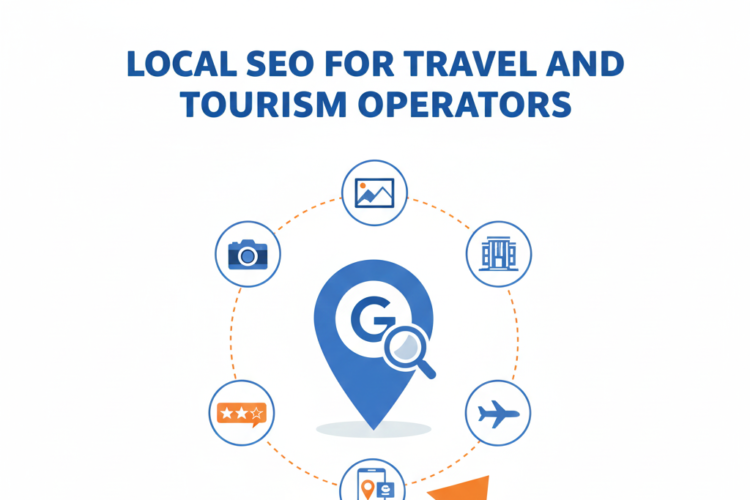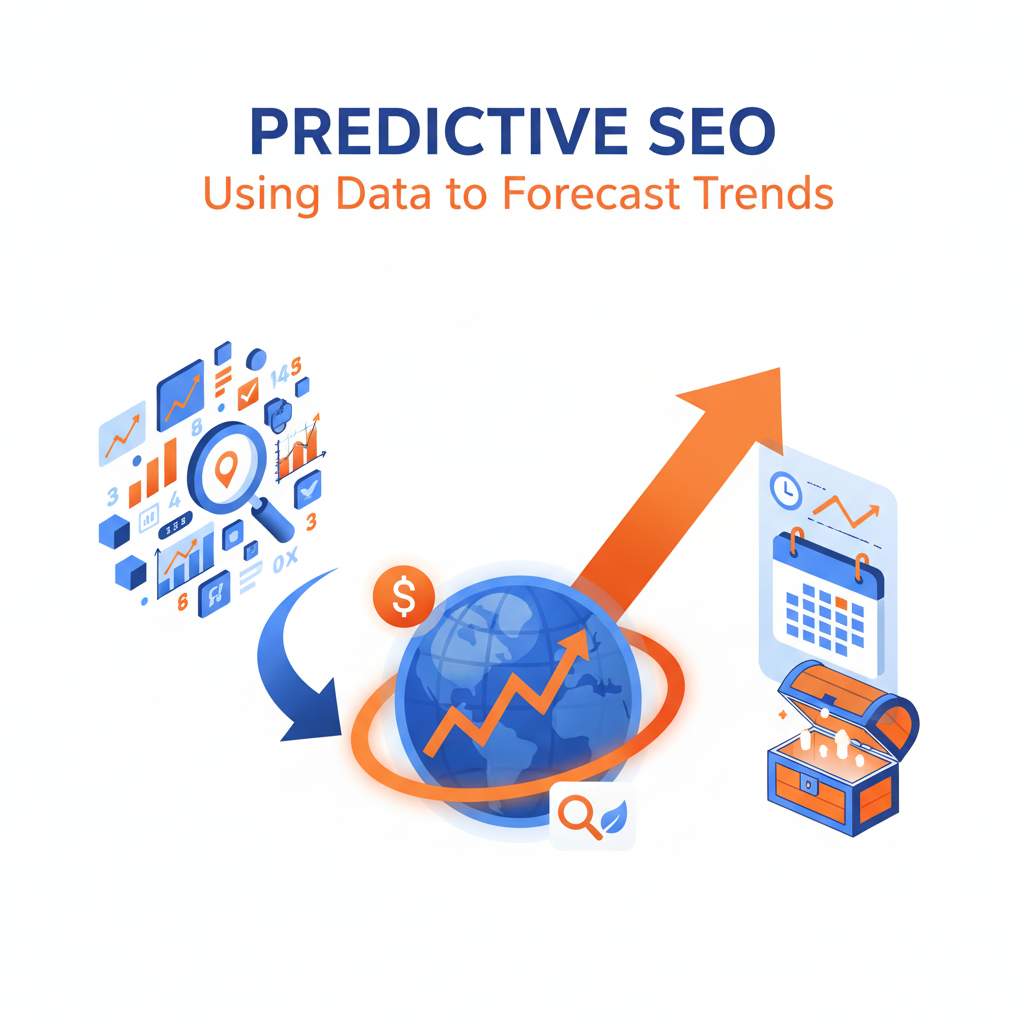
Predictive SEO: Using Data to Forecast Trends
Introduction
In the rapidly evolving digital landscape, staying ahead of search trends isn’t just advantageous—it’s essential for survival. Predictive SEO represents a paradigm shift from reactive to proactive search engine optimization, leveraging data analytics, machine learning, and historical patterns to anticipate future search behaviors before they peak. This comprehensive guide explores how businesses and SEO professionals can harness the power of data to forecast trends, optimize content strategies, and maintain a competitive edge in an increasingly crowded digital marketplace.
Understanding Predictive SEO
What Is Predictive SEO?
Predictive SEO is the practice of using historical data, current trends, artificial intelligence, and statistical modeling to forecast future search patterns and user behaviors. Unlike traditional SEO, which responds to existing trends and competition, predictive SEO enables marketers to identify opportunities before they become saturated, create content for emerging queries, and position themselves as authoritative sources when topics gain mainstream traction.
This approach combines multiple data sources—search volume trends, seasonal patterns, consumer behavior analytics, social media signals, news cycles, and market indicators—to build predictive models that inform content strategy, keyword targeting, and resource allocation.
The Evolution from Reactive to Predictive SEO
Traditional SEO has always been somewhat reactive. Marketers identify high-volume keywords, analyze competitors, and create content to compete for existing search traffic. While this approach remains valuable, it faces significant limitations:
Reactive SEO challenges:
- High competition for established keywords
- Delayed response to emerging trends
- Missed opportunities during trend growth phases
- Resource inefficiency from chasing saturated topics
- Difficulty establishing topical authority in mature niches
Predictive SEO addresses these challenges by shifting focus from what people are searching for now to what they’ll be searching for next. This forward-looking approach allows content creators to establish authority early, capture traffic during growth phases, and build comprehensive content ecosystems before competition intensifies.
The Data Foundation of Predictive SEO
Primary Data Sources
Search Query Data
Search engines process billions of queries daily, creating massive datasets that reveal human intentions, interests, and information needs. Tools like Google Trends, Google Search Console, and third-party platforms provide access to this data, showing:
- Search volume trajectories over time
- Geographic distribution of queries
- Related queries and topics
- Seasonal fluctuation patterns
- Rising and declining search terms
Historical Performance Data
Your own website’s historical data provides invaluable insights into:
- Content performance patterns
- Seasonal traffic fluctuations
- User engagement metrics
- Conversion rate trends
- Keyword ranking volatility
Social Media Signals
Social platforms serve as early indicators of emerging trends. Monitoring tools can track:
- Hashtag velocity and adoption rates
- Topic discussion volume
- Influencer conversation patterns
- Sentiment shifts
- Platform-specific trend emergence
News and Media Monitoring
Media coverage often precedes search volume spikes. Tracking:
- Breaking news patterns
- Industry announcements
- Legislative changes
- Cultural events
- Scientific discoveries
Market and Economic Indicators
Broader economic trends influence search behavior:
- Consumer confidence indices
- Industry growth projections
- Investment patterns
- Employment statistics
- Retail and e-commerce data
Methodology: Building Predictive SEO Models
Data Collection and Aggregation
The first step in predictive SEO involves establishing comprehensive data collection systems. This requires:
Multi-source integration: Connect various data streams into a centralized analytics platform. This might include API connections to Google Analytics, Search Console, social media platforms, keyword research tools, and custom web scraping solutions for competitor monitoring.
Historical baseline establishment: Gather at least two years of historical data to identify patterns, seasonal cycles, and anomalies. Longer historical periods provide more robust predictive capabilities, especially for industries with multi-year trend cycles.
Data cleaning and normalization: Raw data often contains inconsistencies, duplicates, and errors. Implement data validation processes to ensure accuracy, normalize measurement units across sources, and handle missing data appropriately.
Pattern Recognition and Analysis
Once data collection systems are established, the next phase involves identifying meaningful patterns:
Seasonality Detection
Most industries experience predictable seasonal fluctuations. Identifying these patterns enables accurate forecasting:
- Annual cycles: Holiday shopping, tax season, back-to-school, summer travel
- Monthly patterns: Beginning-of-month bill payments, end-of-quarter business activities
- Weekly cycles: Weekend versus weekday search behaviors
- Daily patterns: Time-of-day query variations
Statistical techniques like seasonal decomposition separate trend components from seasonal and irregular variations, providing clearer insights into underlying patterns.
Trend Trajectory Analysis
Understanding how trends develop follows typical lifecycle patterns:
- Emergence phase: Initial mentions appear in niche communities or specialized publications
- Growth phase: Accelerating interest drives exponential search volume increases
- Peak phase: Maximum attention and competition for related keywords
- Decline phase: Interest wanes as novelty fades or new trends emerge
- Residual phase: Stable baseline interest from core audiences
Identifying which phase a trend occupies informs strategic decisions about content investment timing.
Correlation Discovery
Analyzing relationships between variables reveals predictive indicators:
- Leading indicators: Metrics that change before search volume shifts (social mentions, news coverage)
- Concurrent indicators: Metrics that move simultaneously with search trends
- Lagging indicators: Metrics that follow search volume changes
Understanding these relationships enables earlier trend detection and more accurate forecasting.
Predictive Modeling Techniques
Time Series Analysis
Time series models analyze data points collected at regular intervals to forecast future values. Common approaches include:
ARIMA (AutoRegressive Integrated Moving Average): Captures temporal dependencies in data, accounting for trends and seasonality. ARIMA models work well for search volume forecasting when patterns are relatively stable.
Exponential Smoothing: Applies weighted averages where recent observations receive more weight. This approach quickly adapts to changing patterns, making it useful for dynamic markets.
Prophet: Developed by Facebook, this open-source tool handles seasonality, holidays, and trend changes robustly. It’s particularly effective for search data with strong seasonal patterns and multiple seasonal periods.
Machine Learning Approaches
Advanced predictive SEO increasingly leverages machine learning algorithms:
Random Forests and Gradient Boosting: These ensemble methods combine multiple decision trees to predict search trends based on numerous input features. They excel at capturing non-linear relationships and complex interactions between variables.
Neural Networks and Deep Learning: For organizations with substantial data volumes, deep learning models can identify subtle patterns humans might miss. LSTM (Long Short-Term Memory) networks are particularly effective for sequence prediction in search trend forecasting.
Regression Models: Multiple regression analysis quantifies relationships between search volume and potential predictor variables like social media activity, news coverage, and economic indicators.
Model Validation and Refinement
Predictive models require ongoing validation to ensure accuracy:
Backtesting: Apply models to historical data to assess how well they would have predicted known outcomes. This reveals model strengths and weaknesses before deploying for actual forecasting.
Out-of-sample testing: Reserve portions of data during model training, then test predictions against this unseen data to evaluate real-world performance.
Continuous monitoring: Track prediction accuracy over time, adjusting models as patterns evolve or new data sources become available.
A/B testing: When possible, test content strategies based on predictions against control groups using traditional SEO approaches to quantify predictive SEO value.
Practical Applications of Predictive SEO
Content Strategy and Planning
Editorial Calendar Optimization
Predictive insights transform content planning from reactive to strategic:
Seasonal content preparation: Identify when interest in seasonal topics begins rising, not when it peaks. Create and publish content 6-12 weeks before predicted peak interest, allowing time for indexing, link building, and authority establishment.
Evergreen content prioritization: Forecast long-term query stability to identify topics worth substantial investment in comprehensive, authoritative content that will deliver value for years.
Trend-responsive content: Build systems to rapidly create content when emerging trends are detected in early growth phases, capturing traffic before competition intensifies.
Keyword Research and Targeting
Emerging Keyword Identification
Traditional keyword research focuses on current search volumes. Predictive approaches identify:
Low-volume, high-potential keywords: Queries showing early growth signals that will likely increase substantially. These represent opportunities to rank easily now while building authority for future high-volume traffic.
Question-based forecasting: Anticipate questions users will ask as topics evolve. Early comprehensive answers to emerging questions establish authority and capture featured snippets.
Long-tail prediction: Model how broad trend interest generates increasingly specific long-tail variations, enabling comprehensive content ecosystems that capture entire topic clusters.
Competitive Advantage Timing
First-mover Benefits
Predictive SEO creates timing advantages:
Authority establishment: Publishing authoritative content on emerging topics before competitors allows earlier backlink accumulation, social sharing, and topical authority signals.
Featured snippet capture: Less competitive emerging queries offer easier featured snippet opportunities. Early comprehensive content often retains these positions as competition increases.
Brand association: Becoming known for emerging topics positions brands as innovators and thought leaders, generating long-term reputation benefits beyond direct traffic.
Resource Allocation
Budget Optimization
Predictive forecasting improves resource allocation:
Content investment prioritization: Focus resources on topics with highest predicted ROI, avoiding wasted effort on declining or oversaturated keywords.
Talent deployment: Assign expert writers to emerging high-value topics rather than distributing resources equally across all content.
Link building focus: Concentrate link acquisition efforts on content targeting predicted growth areas where authority building generates maximum return.
Industry-Specific Predictive SEO Applications
E-commerce and Retail
E-commerce businesses particularly benefit from predictive SEO:
Product trend forecasting: Identify emerging product interests before inventory investment, enabling proactive sourcing and marketing preparation.
Seasonal demand prediction: Refine inventory and promotional timing based on precise search trend forecasting rather than previous year’s sales alone.
Category expansion timing: Detect when niche interests reach sufficient volume to justify new category development or product line expansion.
Fashion and trend cycles: Predict style trend trajectories, optimizing content and inventory for items in growth phases while avoiding declining trends.
B2B and Professional Services
Professional service providers use predictive SEO to:
Regulatory and compliance content: Anticipate search interest spikes around legislative changes, creating comprehensive resources before implementation dates.
Industry challenge forecasting: Monitor industry discussions and economic indicators to predict when specific business challenges will drive information-seeking behavior.
Seasonal business cycles: Align content publishing with predicted periods when businesses are most likely researching solutions, improving conversion timing.
Emerging technology coverage: Identify which emerging technologies warrant educational content investment based on adoption trajectory predictions.
Healthcare and Wellness
Healthcare organizations leverage predictive SEO for:
Seasonal health concerns: Predict allergy, flu, and seasonal condition interest patterns with greater precision than simple historical averaging.
Treatment trend identification: Monitor medical research publications and clinical trial announcements to anticipate emerging treatment interest.
Health awareness campaigns: Time educational content around predicted increases in condition-specific searches, often tied to awareness months or media coverage.
Symptom search forecasting: Identify emerging health concerns through early symptom search pattern detection, enabling timely public health information.
News and Media
Publishing organizations use predictive approaches to:
Evergreen versus trending balance: Optimize the mix of timely news content and evergreen reference material based on traffic source predictions.
Topic beat assignment: Direct journalistic resources toward topics showing predictive growth signals rather than only covering existing news.
Archive optimization: Identify when historical content may experience renewed interest, enabling updates and republication timing.
Breaking news preparation: Maintain updated template content for predictable events (elections, awards ceremonies, annual reports) ready for rapid publication.
Tools and Technologies for Predictive SEO
Data Analytics Platforms
Google Analytics and Search Console
These foundational tools provide historical performance data essential for trend analysis:
- Query performance tracking over time
- Traffic source evolution
- User engagement pattern changes
- Conversion trend analysis
- Mobile versus desktop shifts
Advanced Analytics Solutions
Enterprise analytics platforms offer enhanced capabilities:
Adobe Analytics: Provides sophisticated segmentation, predictive analytics features, and multi-channel attribution for comprehensive trend analysis.
Tableau and Power BI: Data visualization platforms that help identify patterns in complex datasets, creating interactive dashboards for trend monitoring.
Google BigQuery: Enables analysis of massive datasets, including raw Google Analytics data, for custom predictive model development.
Keyword Research and Trend Tools
Google Trends
An essential free tool for predictive SEO:
- Real-time and historical search interest data
- Geographic trend distribution
- Related query identification
- Topic versus search term comparison
- Rising query detection
SEMrush and Ahrefs
Comprehensive SEO platforms offering:
- Historical keyword volume data
- Trend trajectory visualization
- Keyword difficulty evolution tracking
- Competitive keyword analysis
- Topic cluster identification
AnswerThePublic and AlsoAsked
Question-based research tools revealing:
- Common question patterns around topics
- Related question clusters
- Question evolution as topics mature
- Long-tail question variations
Social Listening Platforms
BuzzSumo
Tracks content performance and social trends:
- Content engagement trend tracking
- Influencer conversation monitoring
- Topic emergence detection
- Historical content performance analysis
Brandwatch and Sprout Social
Enterprise social listening solutions providing:
- Sentiment trend analysis
- Topic velocity measurement
- Platform-specific trend identification
- Audience interest evolution tracking
AI and Machine Learning Platforms
Custom Model Development
Organizations with data science capabilities can build custom predictive models using:
Python libraries: Scikit-learn for traditional machine learning, TensorFlow and PyTorch for deep learning approaches, Prophet for time series forecasting.
R statistical software: Comprehensive statistical modeling capabilities with packages specifically designed for time series analysis and forecasting.
Cloud AI platforms: Google Cloud AI, AWS SageMaker, and Azure Machine Learning provide managed environments for developing and deploying predictive models at scale.
AI-Powered SEO Tools
Emerging AI-specific SEO platforms include:
MarketMuse: Uses AI to analyze content landscapes and predict topic authority opportunities.
Clearscope: Employs machine learning to optimize content for predicted search intent and comprehensiveness.
Frase: Leverages AI to identify content gaps and forecast question-based query opportunities.
Implementing Predictive SEO: A Step-by-Step Framework
Phase 1: Foundation Building (Weeks 1-4)
Audit Current Data Infrastructure
Assess existing analytics implementations:
- Verify tracking accuracy across platforms
- Identify data collection gaps
- Document historical data availability
- Evaluate current reporting capabilities
Establish Data Collection Systems
Implement comprehensive tracking:
- Set up or audit Google Analytics and Search Console
- Configure social media monitoring tools
- Establish competitor tracking systems
- Create automated data extraction processes
Define Success Metrics
Determine how you’ll measure predictive SEO effectiveness:
- Prediction accuracy rates
- Time-to-rank for predicted trends
- Traffic growth from emerging keywords
- ROI comparison against traditional SEO
- Authority establishment metrics
Phase 2: Historical Analysis (Weeks 5-8)
Pattern Identification
Analyze historical data to identify:
- Seasonal patterns in your industry
- Historical trend cycles
- Content performance patterns
- Traffic source evolution
- User behavior trends
Competitive Baseline
Understand competitive dynamics:
- Competitor content timing analysis
- Market saturation patterns
- Authority establishment timelines
- Competitive response speeds to trends
Initial Model Development
Create basic predictive models:
- Simple time series forecasts for established patterns
- Correlation analysis between leading indicators and search volume
- Seasonal adjustment calculations
Phase 3: Pilot Implementation (Weeks 9-16)
Select Test Topics
Choose 3-5 topics for pilot testing:
- Include mix of seasonal and emerging trends
- Select topics with clear predictive signals
- Ensure topics align with business objectives
- Choose measurable outcomes
Create Predictive Content
Develop content based on forecasts:
- Publish before predicted interest peaks
- Create comprehensive coverage anticipating question evolution
- Optimize for both current and predicted related queries
- Implement technical SEO best practices
Monitor and Measure
Track pilot performance closely:
- Compare actual versus predicted outcomes
- Document ranking progression
- Measure traffic acquisition timing
- Assess competitive response patterns
Phase 4: Refinement and Scale (Weeks 17-24)
Model Optimization
Refine predictive approaches based on pilot results:
- Adjust forecasting parameters
- Incorporate new data sources
- Refine timing recommendations
- Improve accuracy through backtesting
Process Development
Create systematic workflows:
- Automated trend detection alerts
- Content planning integration processes
- Cross-functional collaboration frameworks
- Regular forecasting review cycles
Team Training
Build organizational capability:
- Train content teams on predictive insights interpretation
- Develop data literacy across SEO teams
- Create documentation and playbooks
- Establish regular knowledge sharing
Phase 5: Full Integration (Weeks 25+)
Enterprise Deployment
Scale predictive SEO across the organization:
- Integrate forecasting into all content planning
- Expand to additional topic areas and keywords
- Connect predictive insights to other marketing channels
- Establish continuous improvement processes
Advanced Capabilities
Develop sophisticated predictive approaches:
- Multi-variable forecasting models
- Cross-channel prediction integration
- Custom machine learning implementations
- Real-time trend response systems
Challenges and Limitations of Predictive SEO
Data Quality Issues
Incomplete Historical Data
Many organizations lack comprehensive historical data:
- Website migrations may lose historical analytics
- Tracking implementations change over time
- Industry-wide data may be limited for new niches
- Small sample sizes reduce statistical reliability
Mitigation strategies: Supplement internal data with industry benchmarks, use proxy metrics when direct data is unavailable, and clearly document confidence levels in predictions.
Unpredictable External Factors
Black Swan Events
Unprecedented events can invalidate predictions:
- Global pandemics dramatically shifting search behaviors
- Algorithm updates changing ranking factors
- Technological disruptions creating entirely new search patterns
- Cultural shifts rapidly changing interests
Mitigation strategies: Build scenario planning into models, maintain flexibility in content strategies, and develop rapid response capabilities for unexpected changes.
Model Overfitting
Seeing Patterns in Noise
Complex models may identify spurious correlations:
- Finding relationships that don’t represent causation
- Optimizing for historical quirks that won’t repeat
- Creating overly complex models that perform poorly on new data
Mitigation strategies: Use out-of-sample testing, prefer simpler models when performance is comparable, and maintain human oversight of automated predictions.
Competitive Response
Self-Defeating Prophecies
When multiple competitors use predictive SEO:
- Early movers gain advantages, but late movers face increased competition
- Predicted opportunities may become saturated before peaks occur
- Industry-wide trend anticipation can accelerate trend maturation
Mitigation strategies: Focus on differentiation and quality over simply being first, develop unique perspectives on trends, and maintain balanced portfolios of emerging and established content.
Resource Constraints
Implementation Barriers
Predictive SEO requires significant investment:
- Data infrastructure and tool costs
- Analytical expertise and training
- Content production capacity
- Time investment before results materialize
Mitigation strategies: Start with focused pilots, leverage existing tools before custom development, and clearly communicate expected timeline to stakeholders.
Case Studies: Predictive SEO Success Stories
Case Study 1: E-commerce Fashion Retailer
Challenge: A mid-sized online fashion retailer struggled to time seasonal inventory and content against competitor promotions, often creating content after trends peaked.
Approach: Implemented predictive SEO combining Google Trends data, social media listening, and fashion industry publications monitoring. Developed time series models forecasting search interest for specific styles, colors, and items.
Results:
- Published trend-focused content average 6 weeks before previous timing
- Captured 40% more organic traffic during trend growth phases
- Improved inventory timing reduced markdown rates by 15%
- Established authority for emerging styles, maintaining rankings as competition increased
Key Learnings: Fashion trends showed clear social media leading indicators 8-10 weeks before search volume peaks. Micro-influencer discussions proved more predictive than celebrity mentions for mainstream adoption timing.
Case Study 2: B2B Software Provider
Challenge: A SaaS company targeting enterprise clients needed to create thought leadership content around emerging business challenges and technology trends but struggled to identify which trends warranted investment.
Approach: Combined industry publication monitoring, LinkedIn discussion tracking, conference agenda analysis, and customer inquiry patterns to predict which emerging topics would drive meaningful search interest from target audiences.
Results:
- Identified three emerging business challenges before mainstream coverage
- Created comprehensive content clusters ranking #1-3 for primary keywords
- Generated 300% ROI on content investment compared to reactive content
- Established brand as category thought leader, improving sales pipeline quality
Key Learnings: For B2B audiences, conference presentations and industry analyst reports provided 3-6 month leading indicators for search interest. Professional social networks showed earlier signals than general search trends.
Case Study 3: Health and Wellness Publisher
Challenge: A health information website faced intense competition for established health topics and needed to identify opportunities for authoritative content in growing areas.
Approach: Developed predictive models using medical research publication tracking, health news monitoring, seasonal illness patterns, and historical search data. Created early comprehensive content for emerging treatments and health concerns.
Results:
- Identified emerging health trends average 4 months before peak interest
- Captured featured snippets for 60% of predicted trend-related queries
- Increased organic traffic 85% year-over-year
- Established topical authority recognized by healthcare professionals
Key Learnings: Medical journal publications provided strong 6-12 month leading indicators. Combining seasonal patterns with current year conditions (flu strain severity, weather patterns) improved prediction accuracy significantly.
The Future of Predictive SEO
Artificial Intelligence Integration
Natural Language Understanding
Advances in AI will enable more sophisticated trend prediction:
- Better understanding of semantic relationships between topics
- Prediction of how language around topics evolves
- Identification of subtle shifts in search intent
- Automated content optimization for predicted intent changes
Automated Insight Generation
AI systems will increasingly:
- Automatically identify trends worth pursuing
- Generate content recommendations with timing guidance
- Predict competitive responses to trend emergence
- Optimize resource allocation across content portfolios
Real-Time Adaptation
Dynamic Content Optimization
Future systems will enable:
- Real-time content updates as predictions evolve
- Automated A/B testing of predicted optimization approaches
- Dynamic keyword targeting adjustments
- Instantaneous response to unexpected trend shifts
Predictive Personalization
Combining predictive SEO with personalization:
- Individual user trend prediction based on behavioral patterns
- Personalized content recommendations anticipating future interests
- Localized trend prediction for geographic targeting
- Demographic-specific trend forecasting
Cross-Channel Integration
Holistic Trend Prediction
Future approaches will unify:
- SEO predictions with social media strategies
- Paid search forecasting integration
- Email marketing timing optimization
- Content distribution channel predictions
Attribution Evolution
Better understanding of:
- How predictive content influences later conversions
- Long-term brand building impact of early trend adoption
- Cross-channel attribution for predicted opportunity value
Ethical Considerations
Manipulation Concerns
As predictive capabilities advance, ethical questions arise:
- Drawing lines between prediction and manipulation
- Transparency about predictive targeting
- Responsibility for predicted content impact
- Privacy implications of increasingly sophisticated behavioral prediction
Industry Self-Regulation
The SEO industry will need to address:
- Best practices for ethical predictive approaches
- Transparency standards for automated systems
- Guidelines preventing harmful prediction applications
- Balancing competitive advantage with user interests
Conclusion: Embracing the Predictive Future
Predictive SEO represents more than a tactical evolution—it’s a fundamental transformation in how we approach digital marketing strategy. By shifting from reactive response to proactive anticipation, organizations can establish competitive advantages that compound over time, building authority and audience relationships before markets become saturated.
Success in predictive SEO requires balancing sophisticated analytical capabilities with human judgment and creativity. While data science and machine learning provide powerful forecasting tools, strategic thinking, industry expertise, and ethical considerations remain essential. The most successful implementations combine quantitative prediction with qualitative understanding of why trends emerge and how audiences will engage with them.
Starting a predictive SEO practice doesn’t require massive investment or enterprise resources. Begin with available tools, focus on learning from initial experiments, and gradually build more sophisticated capabilities as you demonstrate value and develop expertise. Even simple trend forecasting and seasonal planning improvements deliver measurable benefits compared to purely reactive approaches.
As search engines themselves become more sophisticated at understanding user intent and predicting information needs, content creators who anticipate these needs will increasingly earn algorithmic preference. The future of SEO belongs to those who can look beyond current search volumes to understand what people will want to know tomorrow, next month, and next year—and create the resources to meet those needs before questions are even asked.
The organizations that thrive in this predictive future won’t simply respond to trends—they’ll help define them, establishing themselves as authoritative voices that audiences trust to guide them through evolving information landscapes. By embracing data-driven forecasting while maintaining focus on genuine user value, predictive SEO practitioners can build sustainable competitive advantages that transcend algorithm updates and market shifts.
Author
